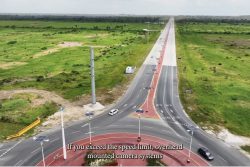Dear Editor,
By now, the people of Guyana would have grasped to varying degrees of understanding that the PPP’s economic and political thinking will not, for the vast majority of citizens, eliminate poverty, inequality, and economic insecurity, will not lift living standards, and will not create a society where shared prosperity and good governance prevail. The PPP’s approach to development is abundantly clear: spend most of the national budget on infrastructure, grant opportunities and favours to business cronies, and hope for growth in economic output and a trickling down of benefits to the ordinary people. The PPP proudly refers to this approach as its focus on public investment. We are told that one day it will land all Guyanese in the land of prosperity.
The PNCR and the Coalition believe differently. The PPP’s approach will deliver no significant development to the people who need it most. And here is where Guyanese must see the contrast between the PPP’s approach and what the PNCR/ Coalition is proposing. As the Opposition Leader Norton spelt out at his last Press Conference, the PNCR/Coalition proposes to directly invest heavily in human development and the well-being of people. For two main reasons: i) direct expenditures on people spur economic growth and development over the short-to-long term. Examples and explanations abound on this well-established correlation.
One of the most conclusive examples comes out of the US where it has been shown that states that historically invested in childcare provision now perform better on several key socio-economic parameters than states that did not; and (ii) spending directly on the advancement and well-being of people is a government’s foremost moral obligation to the people. That obligation is enshrined in what is known as the social contract between the people and their government— which defines what is expected from government by the people and establishes the legitimacy of the state over the people.
So, what the PPP likes to dismiss as public consumption is, in fact, a powerful driver of economic growth and development. The PNCR therefore rejects the PPP’s trickle-down approach (trickle-up, as it mostly turns out) and is instead advancing a bottom-up, middle-out socio-economic development strategy by putting low-to-middle income people first. As Opposition Leader Norton explained: “The more people participate as workers, producers, consumers, investors, and citizens, the better are the chances of building a vibrant and prosperous society and economy for all.”
He pointedly added: “We therefore believe that economic growth and development must be inclusive, where no citizen is excluded by virtue of poverty, deprivation, unemployment and underemployment, low income, no savings, social marginalization, and discrimination.”
At the end of the day, which is the better approach can best be tested not by GDP numbers or budgetary expenditures or miles of roads built, but by people’s subjective wellbeing and their quality of life, such as their guaranteed access to good and free healthcare, food and nutrition, and opportunities for self-advancement and stable income-earning. The PPP’s focus on infrastructure and business cronyism will not get the country anywhere near there.
Sincerely,
Sherwood Lowe







